We marvel at the some people’s ability to seemingly effortlessly generate creative ideas, and we know it is something that we’d like to be able to do more regularly and readily. We certainly would like to see it in our coaching clients, or our teams at work. It is very easy to issues injunctions to “be more creative”, but it begs the question how?
Perhaps a better first question to ask, is why do I want to be creative? What is the problem I am experiencing where I am hoping to apply creative solutions?
Coaching/Counseling clients do not present in your office unless they have a problem, no matter how vaguely specified. As my friend Norman Amundson says, in Active Engagement, often clients report being “stuck”.
For teams, boards or organisations, the problem may be the same – they are stuck, they want something new, something innovative. So how can we think creatively?
Brainstorming – is not the only answer
There are many different approaches to do this, and perhaps the most commonly used technique is brain-storming. It can be highly effective, although recently social psychologists have highlighted that the dynamics of brain storming tend to encourage disproportionate consideration of ideas generated by dominant personalities. And because they are so dominant, such people usually express these ideas relatively early in the process. Also most brainstorming sessions are conducted spontaneously or with little or no notice. Brainstorming can be a lot more effective when participants are forewarned and therefore turn up with prototypes, partial solutions and other inspirations that can be built upon by other participants.
Card sorts can address some of these shortcomings with brainstorming, because the focus is shifted slightly from an interpersonal interaction to a joint focus on the stimulus material presented on the cards. Questions posed on cards are not associated directly with the coach or facilitator, so this avoids some of the social psychological issues of trust or second guessing the professional’s motivation. Instead effort is better directed into a consideration of the cards.
Abandoning the past (temporarily)
A creative thought is one that is in some way new. Generally the thought makes the links between other ideas that have not been linked in the manner generated before. This means that we have to hold the past more loosely than many people, groups or clients typically do. It means agreeing that the past will not necessarily predict the future, and that the way things have always been done, is not necessarily the best way to do them in the future.
Why do we need to loosen this grip on the past? Simply because, if what was done in the past was working well now, there would be no problem to address.
In other words we need to move beyond probability thinking – considering what is most likely to happen given what’s gone before, and shift to possibility thinking – considering what could happen if there were no constraints. With my colleagues Robert Pryor and Norm Amundson we have covered this idea in a paper in the Career Development Quarterly and here is a link to a talk in which I expand upon the idea.
This is where Creative Thinking Strategy cards can be so effective. They comprise 92 cards divided into four themed categories. These categories are:
- Challenges – 23 cards identifying common challenges to creative thinking
- Probabilities – 23 cards asking questions that prompt consideration of the probable solution.
- Possibilities – 23 cards asking questions that prompt creative thinking about possible solutions
- Plans – 23 cards to encourage the generation of action plans based on the creative solutions
The Challenge cards cover some of the typically encountered client “blocks” as well as the sorts of behaviors that allow people to thrive on change. Typical examples include “Generating Options”, “Facing Fear”, “Going for the best”, “Defeating Limitations”.
The Possibilities cards contain questions designed to provoke more expansive thinking, wildest dreams, limit free considerations. Some typical examples include “What is the most meaningful, important and worthwhile outcome?”, “What in my wildest dreams could happen?”, ‘What are my greatest strengths for taking action?”.
The Plans cards contain solution-focussed questions designed to formulate a plan to put the possibilities into action. Typical examples include “How could I use uncertainty to improve my decision making?”, and “How could I put more effort into what I want to happen”.
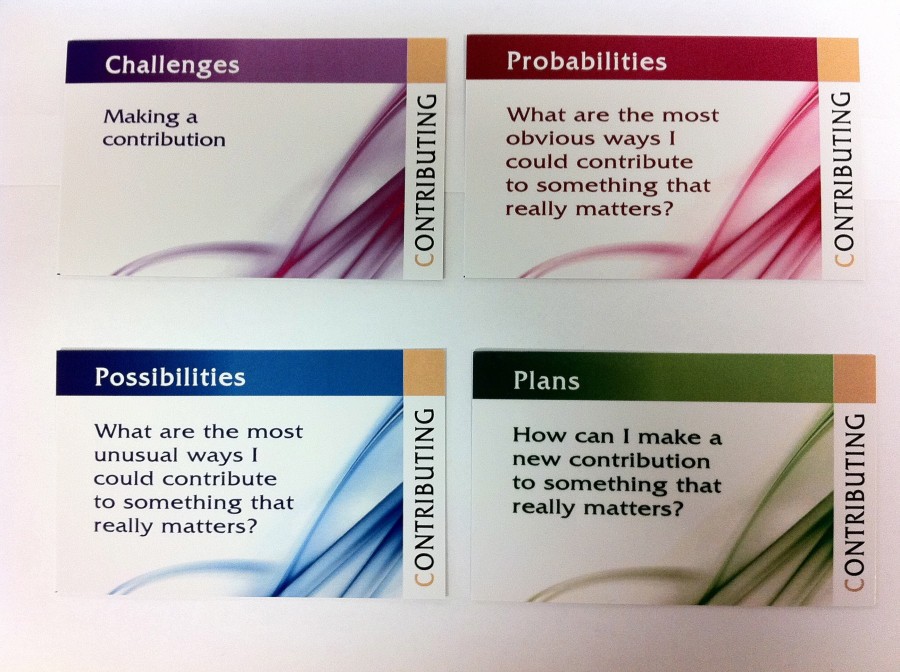 The cards are color-coded for easy identification, and we have also grouped suggested Probability, Possibility and Plans cards for each Challenge card – this gives 22 sets of Challenge-Probability-Possibility and Plans cards, plus a set of 4 blank cards – for the user to make up their own Challenge, and questions.
The cards are color-coded for easy identification, and we have also grouped suggested Probability, Possibility and Plans cards for each Challenge card – this gives 22 sets of Challenge-Probability-Possibility and Plans cards, plus a set of 4 blank cards – for the user to make up their own Challenge, and questions.
In the image above you can see the complete set for the “Contribution” challenge. All the Challenge Cards have a purple strip across the top, the Probability cards have a red strip, the Possibility cards have a green one, and the Plans cards have a blue strip.
Each different Challenge has a colored box in the top right hand corner – in this case a light brown box. This helps you find all the corresponding cards for this Challenge quickly.
In words down the right hand edge, the name of the Challenge is included and the first letter is printed in the same colour as the box in the top right corner.
This means the user can quickly identify which cards belong together, or to quickly find only the Possibility or Plan cards for instance.
The cards do NOT have to be used in the way suggested. Users can mix and match questions and challenges as they see fit.
Using the CTS cards with individual clients
Either the coach or the client can select which challenges to work on. The coach may have a specific agenda they want to follow, or alternatively the Challenge Cards can be arranged on a table and the client asked to select several that seem most relevant to their concerns.
Next the corresponding Probability, Possibility, and Plans cards are found and placed in a row reading from left to right “Challenge-Probability-Possibility-Plan”.
Using the “Contribution” Challenge as an example, the client briefly describes the context in which they want to contribute – e.g. their career, their work team, their community, their company etc. The client would then be asked to think about the most obvious ways in which they could contribute (see image above for questions). It is likely that they will outline the usual things they’ve done in the past, or things they’ve seen others do. The idea here is to simply list these and not evaluate them, try to avoid getting into a pros and cons, strengths and weaknesses debate. After they have exhausted the obvious solutions, ask the client to consider the Possibilities question about unusual ways to contribute. Encourage the client to be as way out and wacky as they can. For instance you could make a way out suggestion to get the ball rolling – “what about contributing a joke of the day to cheer up and encourage your team?”. Again the idea here is for quantity and NOT quality of ideas. After they’ve exhausted the Possibilities, you can either prompt them to think along a different line, or simply wrap up and move on to the Plans cards.
Here the idea is to encourage the client to translate some of their Possibility ideas into viable plans for action. This is an important step because even if the client has no intention of executing the plan, the very fact that they could if they so chose can serve to motivate the client and help them feel that they have some control and discretion in their choices in an area that is important to them.
Pick a card, any card
A quick and easy alternative is simply to get the client to pick cards at random and attempt to the answer the questions. Sometimes it is best to select only the possibilities cards for this exercise, otherwise you can reinforce the probabilities if they end up selecting a lot of those cards. Equally, if the client is prevaricating, selecting on the Plans cards for this exercise focusses discussion on how to put ideas into action
Working with groups
Essentially a similar model to working with individuals can be used here – identify the challenges – identify the most likely solutions-work on the possible solutions -turn the possibilities into plans.
Alternatively, using several sets of the cards, different groups in the room can be set the same challenge to address. By working individually, they will come up with different solutions or perspectives that can be considered by the whole group in a plenary session, this provides a way of enhancing a brainstorming session.
Facilitating meetings
When facilitating groups who already have some clear tasks to address in a planning meeting, the cards can be very effective as prompts after their deliberations. Place four or five Possibility and Plans cards on each table and ask the group to consider these cards before finalising their answers to their planning task. As a facilitator, observe the groups in action. In all likelihood many groups will become so preoccupied with their task in hand they will forget to look at the cards – because they have become so focussed on the probabilities. Assist them by picking up the cards on their table and reading several of the questions out to the group before moving on and doing the same thing for other groups.
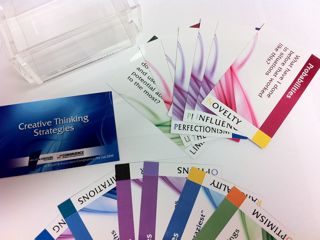 Creative Thinking Strategy cards are an effective method of helping individuals and groups be more creative in solving problems, and more practical in implementing solutions to problems. The cards are available for sale from Bright and Associates Shop. Each set comes with an attractive and sturdy presentation box and a 50 page manual describing the cards and suggesting several exercises using the cards.
Creative Thinking Strategy cards are an effective method of helping individuals and groups be more creative in solving problems, and more practical in implementing solutions to problems. The cards are available for sale from Bright and Associates Shop. Each set comes with an attractive and sturdy presentation box and a 50 page manual describing the cards and suggesting several exercises using the cards.
Related Posts

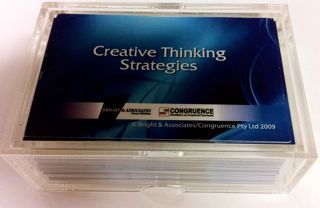
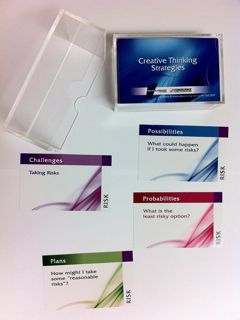
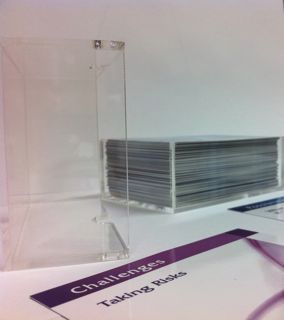
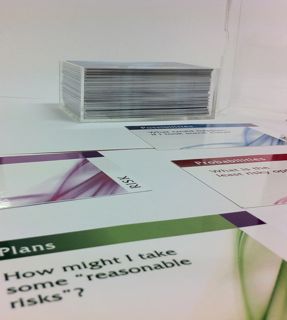
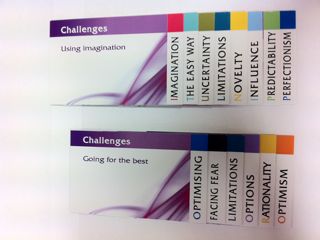







Pingback: Tweets that mention Getting Creative Solutions Using Creative Thinking Strategies Cards | The Factory -- Topsy.com
Pingback: Transform your Career by Shifting: Shift 6 From Probabilities To Probable Possibilities | The Factory
Pingback: Is the Chaos Theory of Careers doing Practitioners out of a job? | The Factory